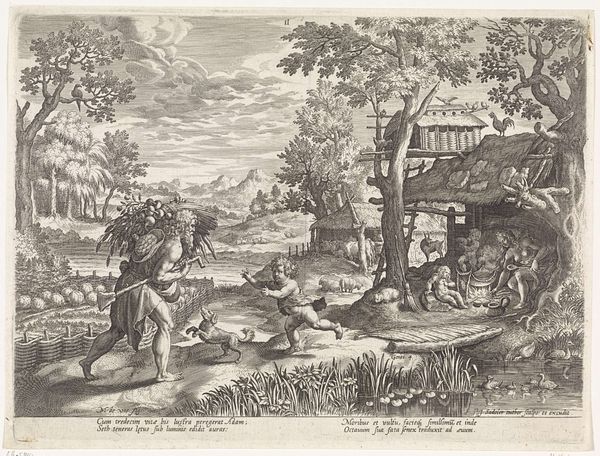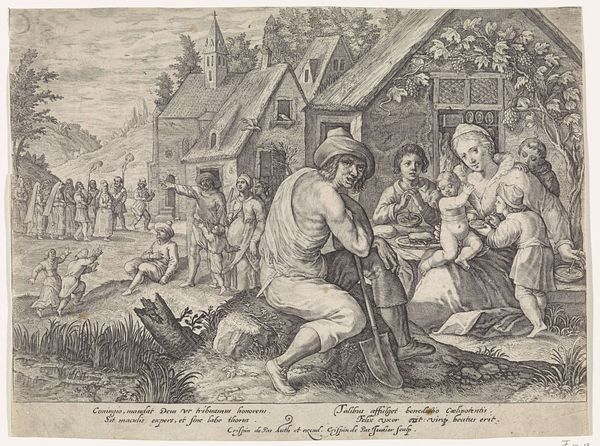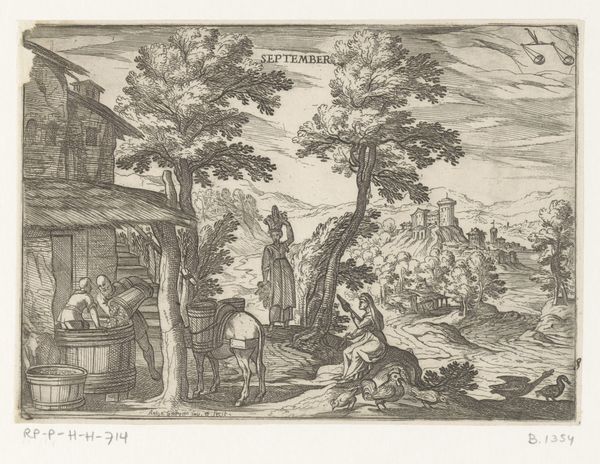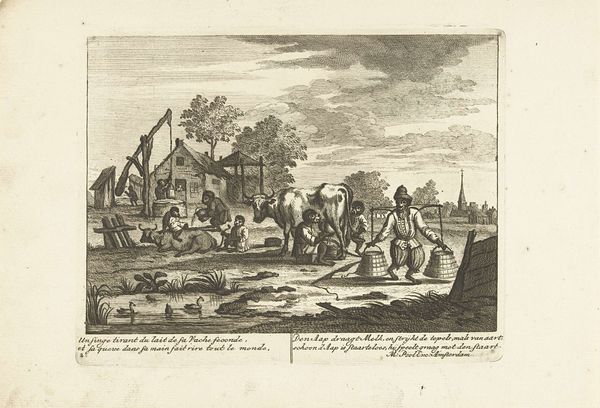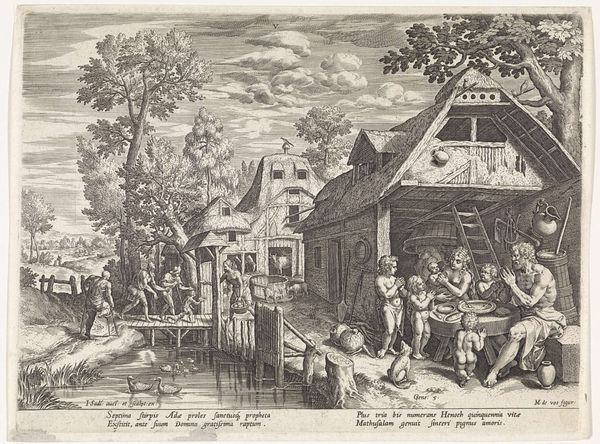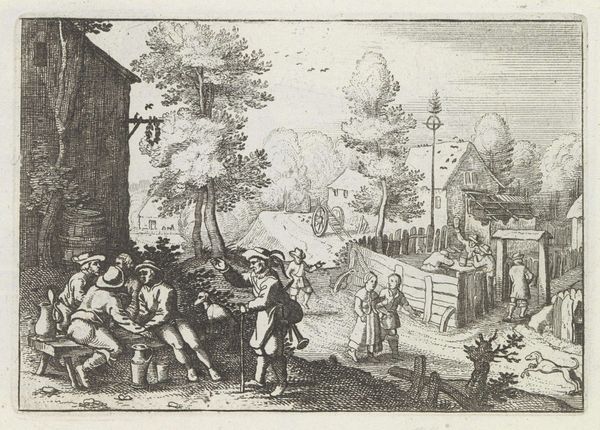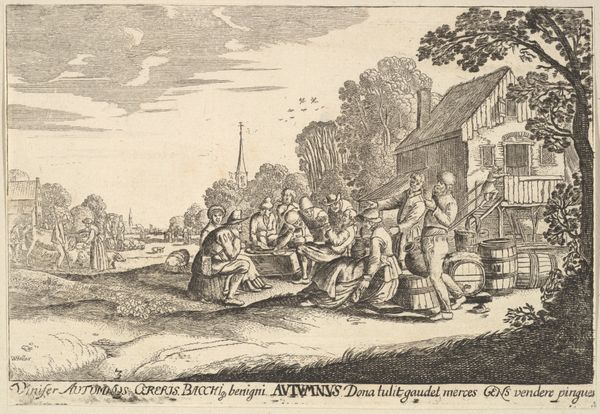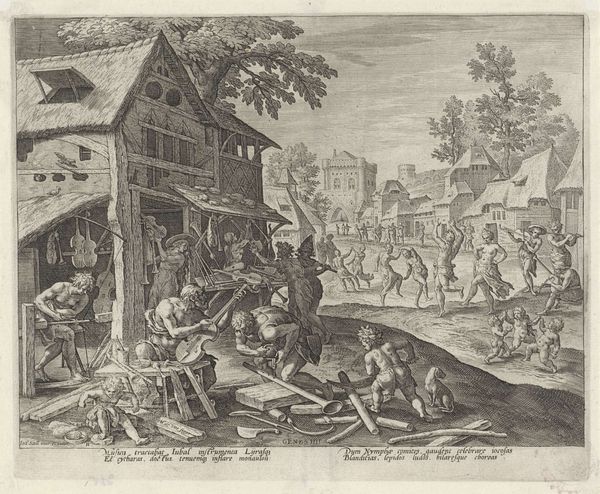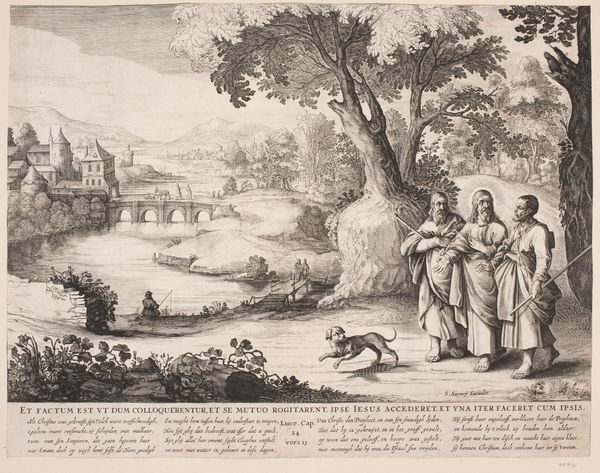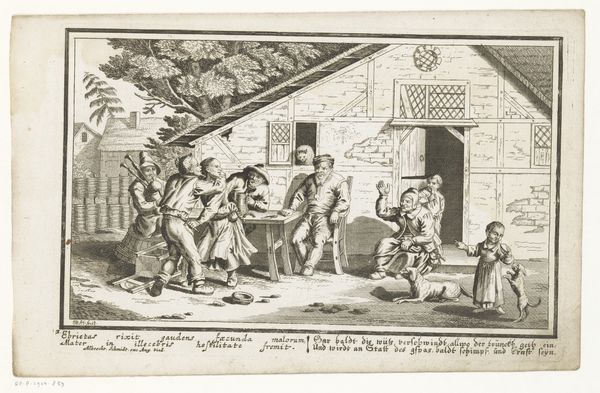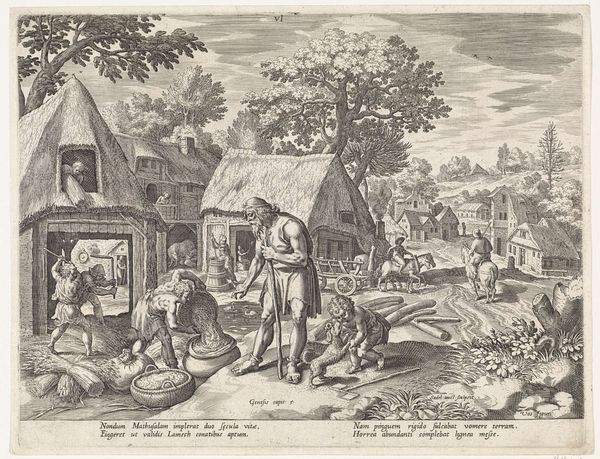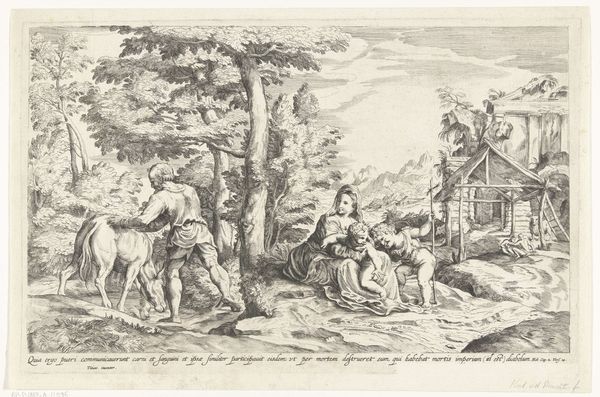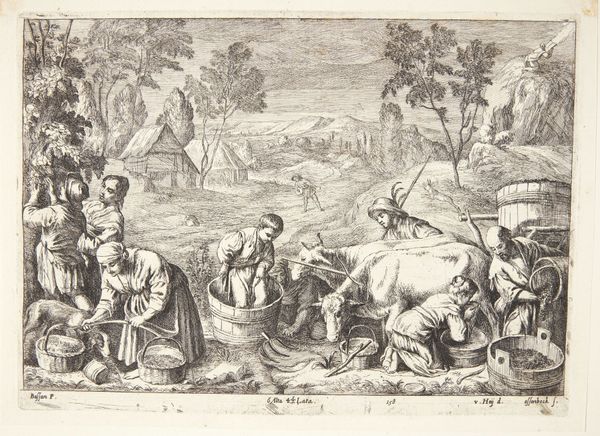
Brillenverkoper verkoopt een bril aan een oude vrouw met een spinnewiel 1694 - 1744
0:00
0:00
print, engraving
#
narrative-art
#
dutch-golden-age
# print
#
old engraving style
#
landscape
#
line
#
genre-painting
#
engraving
Dimensions: height 191 mm, width 288 mm
Copyright: Rijks Museum: Open Domain
Editor: So, this print, "Brillenverkoper verkoopt een bril aan een oude vrouw met een spinnewiel" by Elias Baeck, is from somewhere between 1694 and 1744. It’s an engraving, and the fine lines create such a detailed scene. I'm struck by the composition; it's packed with figures and action, almost like a snapshot of daily life. What visual elements stand out to you? Curator: The efficacy of the line work is compelling, especially when considering the creation of depth on a two-dimensional plane. Observe how the density of the lines varies to suggest light and shadow, and thus volume, particularly in the depiction of the buildings and figures. Consider the structural significance of the lines, guiding the eye. Is it not fascinating to deconstruct what might have been the original artist's process to consider its effect? Editor: It's true, the lines do direct the eye to the woman at the spinning wheel first, then outwards to the other figures. I see how line variations describe depth, however does the composition’s balance give you pause? The left side seems much denser than the right. Curator: Yes, but notice how this asymmetrical composition functions through internal balance. The cluster of figures around the house balances the open space of the landscape on the right. The distribution of tones contributes significantly to the image's sense of visual stability and harmony, do you perceive the geometric composition as it guides your viewing process? Editor: That’s a perspective I hadn’t fully considered before. I see how it creates visual equilibrium, despite the difference in density, now. The lines do work hard to do that. Curator: Exactly. Through the orchestration of formal elements, this genre scene is rendered with significant complexity and skill. Editor: I agree, paying close attention to line work is a great way to interpret prints like these. Thanks for the insights.
Comments
No comments
Be the first to comment and join the conversation on the ultimate creative platform.
